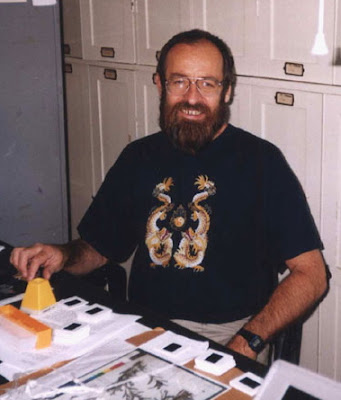Cycads new and old
It's now three months since our highly respected botanist Ken Hill died. Ken spent most of his working life at Sydney's Botanic Gardens and he was expert on eucalypts and cycads but dabbled (in his typically thorough way) in many other plant groups such as Hoya and the famous Wollemi Pine.
Ken had a flair for electronic presentation and manipulation of biological data - the very best kind of computer nerd.
He is greatly missed at the Gardens but every time you walk past one of our cycads you can be sure he had some connection with it - collecting it, naming it, classifying it or including its vital statistics in his wonderful Cycad Pages.
Cycads have been with us since before the age of dinosaurs, but in the last 15 years we’ve doubled the number of known species, from 150 to nearly 300. Ken Hill was a major contributor to this spurt in knowledge.
Unsure what a cycad is? They are those palm-like plants with a short trunk (although there are some notable exceptions in the height department – in Australia we have the tallest cycad in the world, towering to 17 m or more).
Many of the species around the world are threatened with extinction. Because they can poison stock, they have been often treated as troublesome weeds, with kerosene or an axe the usual management solution.
Nowadays we value them more but they still have the potential to poison animals, including us. The often brightly coloured seeds in particular are extremely poisonous.
They contain an amino acid commonly called BMAA. There is much debate about how it gets into cycad seeds and how toxic it really is. One scenario is that the acid is produced by blue-green algae that live in special roots near the soil surface.
Most cycads live longer than us but their seeds and seedlings have a low survival rate. There is no known way for the seeds to be dispersed today, suggesting a now extinct animal may have helped them in the past.
The 80 or so different species of cycad in Sydney's Royal Botanic Gardens are from tropical and subtropical Australia, as well as Vietnam, China and other cycad-rich countries in our region.
One species we don’t have in our botanic gardens but which you can find in a few gardens around the world is Wood’s Cycad. Encephalartos woodii was discovered in Zululand, in 1895 by the curator of the Durban Botanic Gardens, Medley Wood.
Every individual in the clump was male – cycads produced either male or female cones, not both – and no female plants have ever been found. Offsets from the original, and subsequent, plants are now dotted around the world and there is hope that one day a genetic mutation may see females produced.
One of the original plants collected by Wood is still growing in the Durban Botanic Gardens in South Africa (see photo at top of post). It’s both a sad and inspiring story, as is Ken Hill's, having died young but achieved so much.
Image: At the top, the hundred year-old male cycad in Durban Botanic Gardens. Just above, Ken Hill at Kew Gardens in the 1990s (taken, I think, by Karen Wilson). *The latter part of this post is from the Radio Archives (May 2007).


Comments